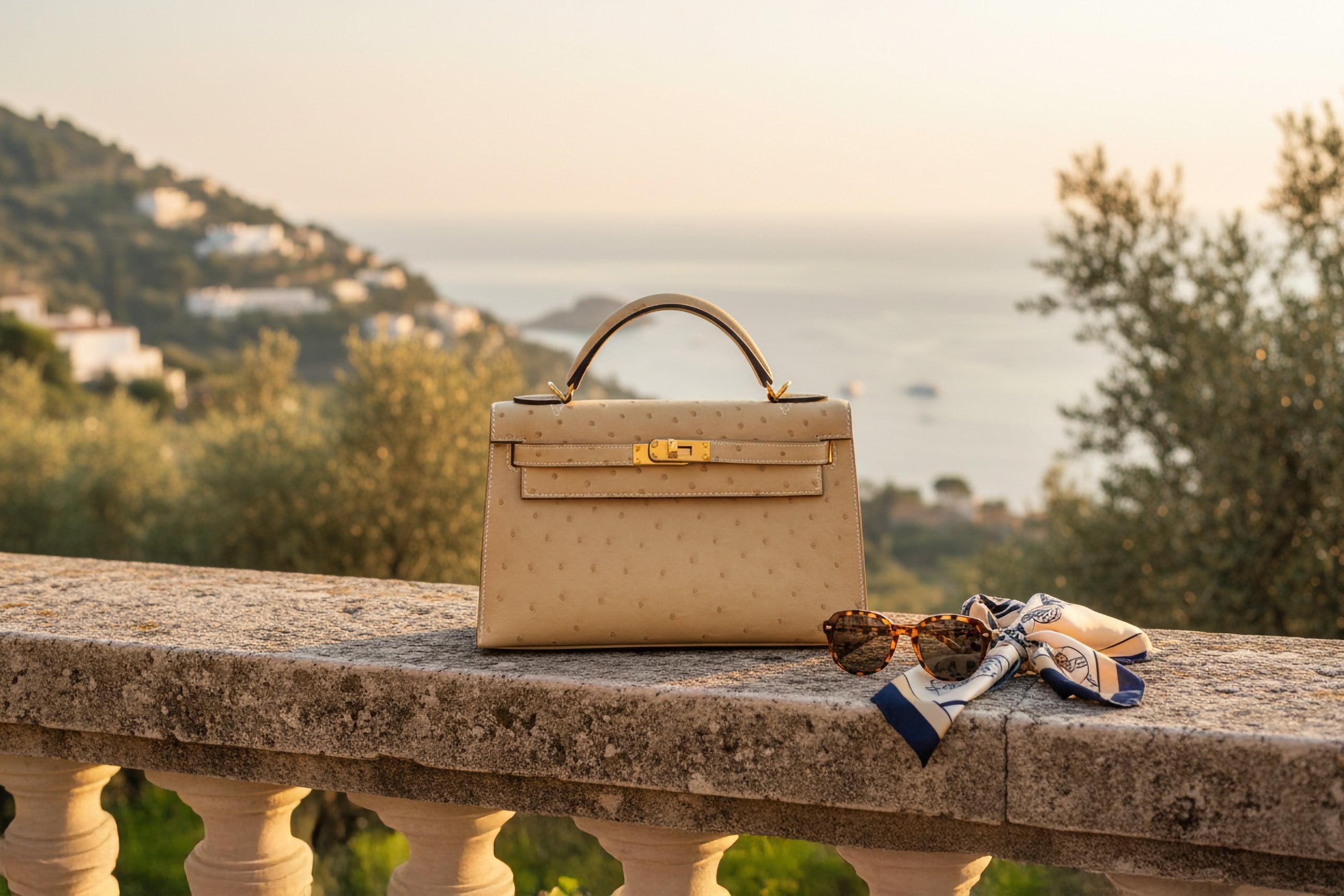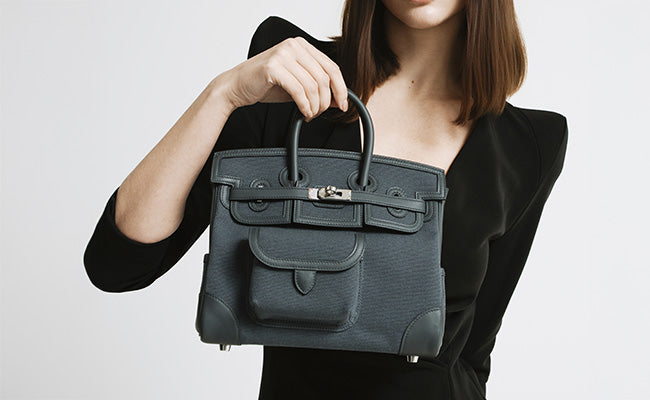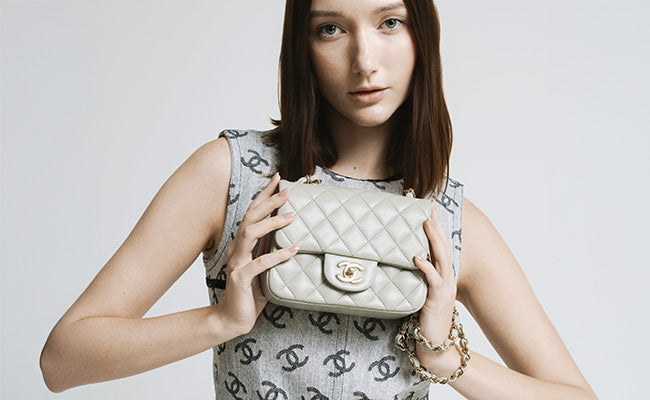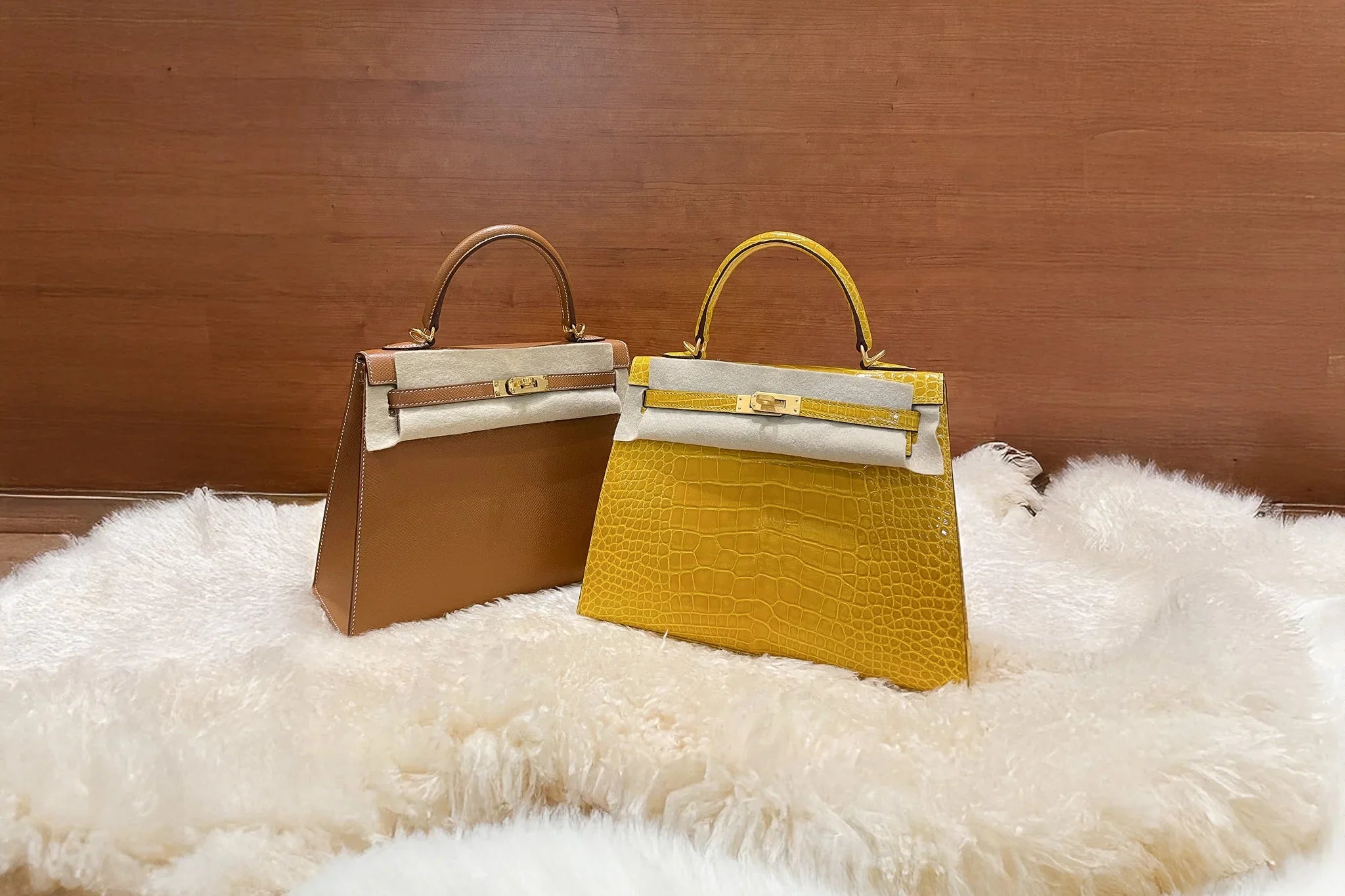
Condition Grades Decoded: Pristine vs. Excellent vs. Good in Real Photos
Check out our Hermès collection and Birkin bags!
When you’re shopping for pre-owned luxury items, understanding condition grades can make all the difference.
We’ve all scrolled through listings where “excellent” means anything from barely handled to, well, a bit rough around the edges. It’s confusing, and sometimes a little nerve-wracking, not knowing what you’ll actually receive.
The key to smart luxury shopping? Knowing what pristine, excellent, and good condition really look like in real photos.
These aren’t just fluffy marketing terms; they’re your map to figuring out value, authenticity, and what you’ll actually unpack when that coveted Hermès bag lands on your doorstep.
Let’s break down the mystery behind condition grades with actual photos, so you can shop with a bit more confidence, whether you’re eyeing your first Birkin or just adding another trophy to the shelf.
No more wild guessing or unpleasant surprises, just honest, practical insight into what each grade means for your luxury investment.
Key Takeaways
- Condition grades directly affect resale value and help you know if you’re getting real value for your money.
- Real photos show details like corner wear, hardware condition, and interior cleanliness that set each grade apart.
- Knowing these grades helps you make smarter buying decisions and dodge costly mistakes.
Breaking Down Condition Grades in Photos
Interpreting condition grades from photos means knowing what to look for and how graders actually evaluate items. Spotting specific visual markers is everything.
Visual Clues for Each Grade
Pristine condition items look untouched in photos. Think sharp corners on leather bags, unbent packaging, and no visible wear. Hardware shines, no scratches, no tarnish.
Excellent condition shows minimal use. Maybe a faint scuff on a corner, or tiny scratches on hardware, but you’ll need to look close, sometimes really close, to spot them.
Very good condition means you’ll see light, but visible wear. Softened leather edges, minor creasing, or slight color changes where hands have touched the item.
Good condition is obvious in photos. Scratches, worn corners, patina, or fabric pilling show up even in standard lighting.
The camera doesn’t sugarcoat it, each grade tells its own story if you know where to look.
How Professional Graders Evaluate Photos
Professional graders don’t just eyeball a few shots. They check multiple angles under consistent lighting to catch every detail.
The focus is always on high-stress spots: bag corners, handles, zippers, clasps. These areas tell the story of how an item’s been used.
You’ll see photos from the front, back, sides, interior, bottom, and close-ups of hardware. It’s not about flattering angles, it’s about full transparency.
Color accuracy and lighting are big deals. They let graders spot subtle discoloration or wear that might hint at repairs or uneven aging. Standardized lighting setups keep things honest.
And yes, documentation includes close-ups of any flaws, even tiny ones, so buyers know exactly what they’re getting.
Pristine Condition: The Closest Thing To Brand New
Pristine condition is the holy grail of resale; items that look and feel brand new, even though they’re technically pre-owned. No signs of wear, and often you’ll get the original packaging and accessories, too.
Signs of Pristine in Clothing and Shoes
When we check out pristine condition clothing, we want to see fabric that’s untouched. No pilling, fading, or stretching. It should feel like it just came off the rack.
Seams are perfectly aligned, no loose threads, no stress marks. For Hermès scarves or Chanel jackets, the colors should still pop.
New with tags is the gold standard. Tags are still attached, sometimes with security devices from the store.
For shoes, pristine means unworn soles, no scuffs, no creasing. The uppers should be flawless, with no bends or signs of use.
Original insoles are clean, no footprints. Even the inside lining is spotless, no darkening from feet or hosiery.
Packaging and Originals: Tags, Boxes, and Accessories
Original accessories matter a lot for pristine condition. Dust bags, authenticity cards, care booklets, and original boxes all count.
For Hermès, think orange box, ribbon, paperwork, the whole nine yards. These extras add value and reassure buyers.
New without box can still be pristine if the item itself is untouched. But original packaging always boosts desirability and resale value.
You might even see protective plastic on hardware or tissue paper wrapping. These little details show the item’s been handled with care.
Sometimes, pristine pieces don’t have tags, but show no signs of use. Maybe a collector removed the tags for display but never wore the item. That still counts as pristine.
Spotting Excellent Condition With Confidence
Excellent condition means minimal wear and careful upkeep, just a step below pristine. These items look great, with only tiny signs of use that are often hard to spot in regular photos.
Photo Indicators of Excellent Grade
Hardware tells the story. Clasps, buckles, zippers should shine, maybe with a light scratch here or there. Functionality is key; everything should work as intended.
Edges and corners matter. Leather goods keep sharp corners, with only slight softening. Canvas stays crisp, no fraying.
For shoes, look at the soles. Excellent pairs have light wear, but the structure’s still solid. Heel tips are intact, with little scuffing.
Clothing keeps its shape and color. Seams hold up, fabric stays smooth, no pilling or pulls.
Original accessories are often included. Dust bags, boxes, and authenticity cards all add up.
Subtle Wear Vs. Immaculate Surfaces
Subtle wear might show as a gentle patina on leather handles or slight softening at stress points. It’s natural aging, not damage.
Immaculate surfaces have no visible marks in normal lighting. There’s a difference between factory-fresh and carefully preserved; excellent is the latter.
Functionality is the real test. Zippers should glide, clasps should snap, and the item should feel solid.
Good sellers show it all. Multiple angles, honest lighting, and close-ups of any flaws, no hiding in the shadows.
What Makes Good Condition Stand Out?
Good condition means you’ll see clear signs of use, but the item still works as it should. Here’s what to expect in photos and what details really matter.
Expected Signs of Use in Real Photos
With good condition luxury items, certain things jump out right away. Corner rubbing shows as lighter patches where leather’s worn down.
Hardware tarnishing can look like dark spots or a dull finish on zippers, clasps, and buckles. The metal might have lost its shine, but it still works.
For clothing, watch for:
- Fabric pilling on sweaters
- Faded colors at stress points
- Minor pulls in delicate fabrics
Shoes in good condition show:
- Worn soles from regular use
- Creasing at the toe box
- Scuffs on heels and edges
The interior tells the truth; pen marks, light stains, or darkening from oils are all normal at this grade.
What Buyers Should Confirm Visually
Always check the parts that matter most. Zippers should work, clasps should close, functionality over perfection.
Look at structural integrity. Good condition items hold their shape, even if they show wear. If you see sagging or collapsed spots, that’s a red flag.
For clothing, make sure:
- Seams are intact
- Buttons are secure
- No holes or tears
Shoes should have:
- Supportive heel counters
- Even wear on soles
- Secure stitching
Corner wear should be consistent. If you see heavy damage in one spot, it could mean poor storage or handling, which might drop the grade.
Condition Grades in Fashion: A Real-Life Guide
Condition grades make more sense when you look at specific categories and their wear patterns. Shoes show their age through soles and structure, while handbags reveal all through corners and hardware.
Shoes: Soles, Scuffs, and Shape
Soles are the starting point for grading luxury shoes. Pristine shoes have spotless soles, never worn outside.
Excellent means minimal indoor wear. Maybe a faint mark from trying them on, but the shape stays perfect.
Good condition shoes show moderate sole wear but hold their structure. Expect scuffs on the soles and some creasing at flex points. Heel tips might show wear, but shouldn’t be worn down.
Fair condition? You’ll see:
- Noticeable sole thinning
- Deep leather creases
- Scuffs on the uppers
- Some heel damage
Accessories matter, too. Pristine shoes should come with dust bags, extra heel tips, or protective stickers. Excellent pairs might still have some of these if the owner was careful.
Handbags: Corners, Patina, and Hardware
Handbag corners never lie. Pristine bags have sharp, flawless corners, no lifting, no wear. The shape looks just like it did on day one.
Excellent bags might have the slightest softening. These have been carried gently, with minimal contact damage.
Good condition? You’ll see corner scuffs or lifting at stress points. It’s normal wear, but shouldn’t affect how the bag works.
Hardware grading:
- Pristine: Mirror-bright, no scratches
- Excellent: Tiny hairline scratches
- Good: Light scratching, slight dulling
- Fair: Noticeable tarnish or scratches
Patina depends on the leather. Vachetta leather, for example, develops a honey tone with age; sometimes that’s actually a plus, especially with Hermès. We look for even, attractive patina; water spots or stains are less desirable.
Original extras like dust bags, authentication cards, and boxes always bump up the grade and value.
Understanding Accessories, Packaging, and Extras
Original accessories and packaging can seriously boost a luxury item’s value, and sometimes even its grade. New with tags gets top dollar, while missing dust bags or boxes can lower an item’s status, even if it’s otherwise pristine.
Role of Original Accessories
We’ve seen mint Hermès bags lose a grade just because the dust bag’s missing. Accessories like dust bags, authenticity cards, care booklets, ribbons, and boxes prove authenticity and make the item more valuable.
Missing accessories doesn’t mean a bag’s fake, it just affects the whole package. A pristine Birkin without its dust bag might get bumped down to excellent.
Most important accessories:
- Dust bags: show the item was cared for
- Authenticity cards: verify the purchase
- Original boxes: complete the experience
- Care instructions: show thoughtful ownership
Some sellers split up accessories to make more money. Always ask what’s included before judging the condition.
New With Tags vs. New Without Box: A Visual Walkthrough
New with tags is as good as it gets, untouched items, all the original extras. Tags attached, plastic wrap, paperwork, the works. They look like they just left the boutique.
New without box is a little different. The item itself is perfect, but something’s missing; maybe the box got lost or the dust bag disappeared.
What we notice:
- With tags: Fresh tags, sealed packaging, everything crisp
- Without box: Perfect item, but not the full package
The grade might stay the same if there’s no wear, but market value usually drops. We’ve seen price differences of up to 20% just because of missing packaging.
Honestly, some buyers prefer new without box, you get the same quality for less.
Frequently Asked Questions
Condition grades can make or break a luxury purchase. Here are some answers to common questions about pristine, excellent, and good conditions.
What exactly sets a 'Pristine' condition Hermès bag apart from one in 'Excellent' condition?
A pristine Hermès bag shows zero signs of wear or handling. Corners are sharp, hardware is flawless, and leather feels untouched.
Excellent condition bags might have tiny scratches or the faintest corner softening, stuff you probably won’t see in photos, but it’s there if you look closely.
The price jump can be real. We’ve seen pristine Birkins fetch 15-20% more than excellent ones.
Can you spell out the difference between 'Good' and 'Excellent' condition when shopping for pre-loved luxuries?
Excellent condition? You'll hardly spot any wear, maybe a faint patina on leather handles, or those tiny scratches you only catch if you tilt it just right in the light.
Good condition, on the other hand, shows more obvious signs of use. Expect visible corner scuffs, darkened handles, or a bit of structure softening, but nothing that messes with how it works.
Both still bring the real luxury vibe. Good condition just means the item’s lived a little, and honestly, that can add some charm.
For an aficionado of high-end items, what should one expect when a product is listed with 'Good' condition?
If you’re eyeing something in good condition, expect to see that it’s had a life before yours. Leather might have worn corners, patina on the handles, or a scuffed interior, nothing that ruins its structure.
Watches? Maybe some scratches on the case, a bit of bracelet looseness, or a crystal that’s not flawless. Still, these pieces work perfectly and stay true to their brand.
And the upside: you’ll likely snag 40-60% off retail, so you get the luxury at a friendlier price.
Who do I contact for a ritzy customer service experience to inquire about my latest 'Pristine' condition find?
Our customer service team is ready to help, right on our website or app. We even offer white-glove support.
It’s easiest to reach out directly through our main channels, live chat, email, or just give us a call if you prefer a real voice.
If your purchase was a big one, sometimes you’ll get an account manager just for you. Check your confirmation email for the right contact info. If you’re unsure, don’t hesitate to ask; we’re usually happy to help.
Is there a noticeable difference in quality between 'Pristine' and 'Premium' conditions for those with a penchant for extravagance?
Every platform seems to have its own lingo, but usually, 'pristine' means the absolute top-tier condition. 'Premium' is a notch below, think tiny flaws, maybe a faint scratch you’d have to squint to spot.
Honestly, both still feel pretty luxurious. For most collectors, you’ll have to look really close to tell them apart.
Personally, I’d say the photos matter way more than whatever label someone slaps on it. Focus on good, clear images and whether you trust the seller or site, rather than just the fancy-sounding grade.



